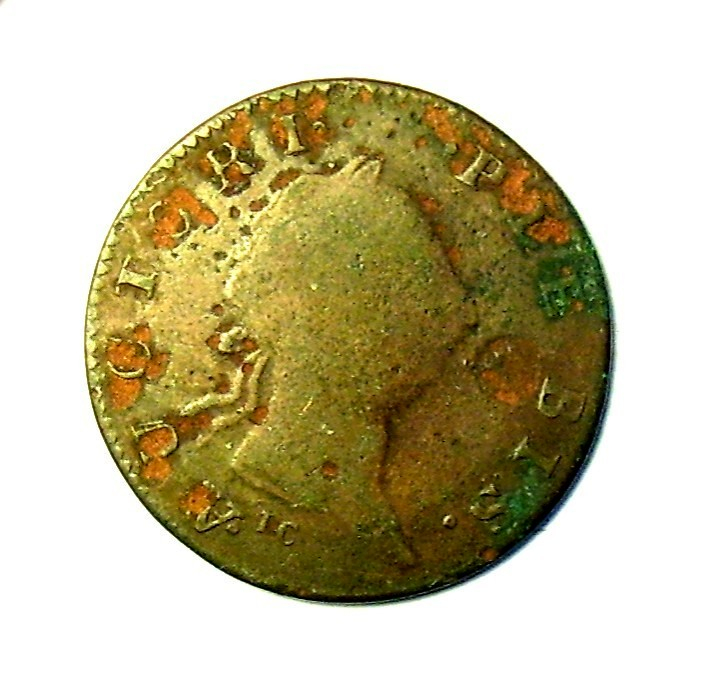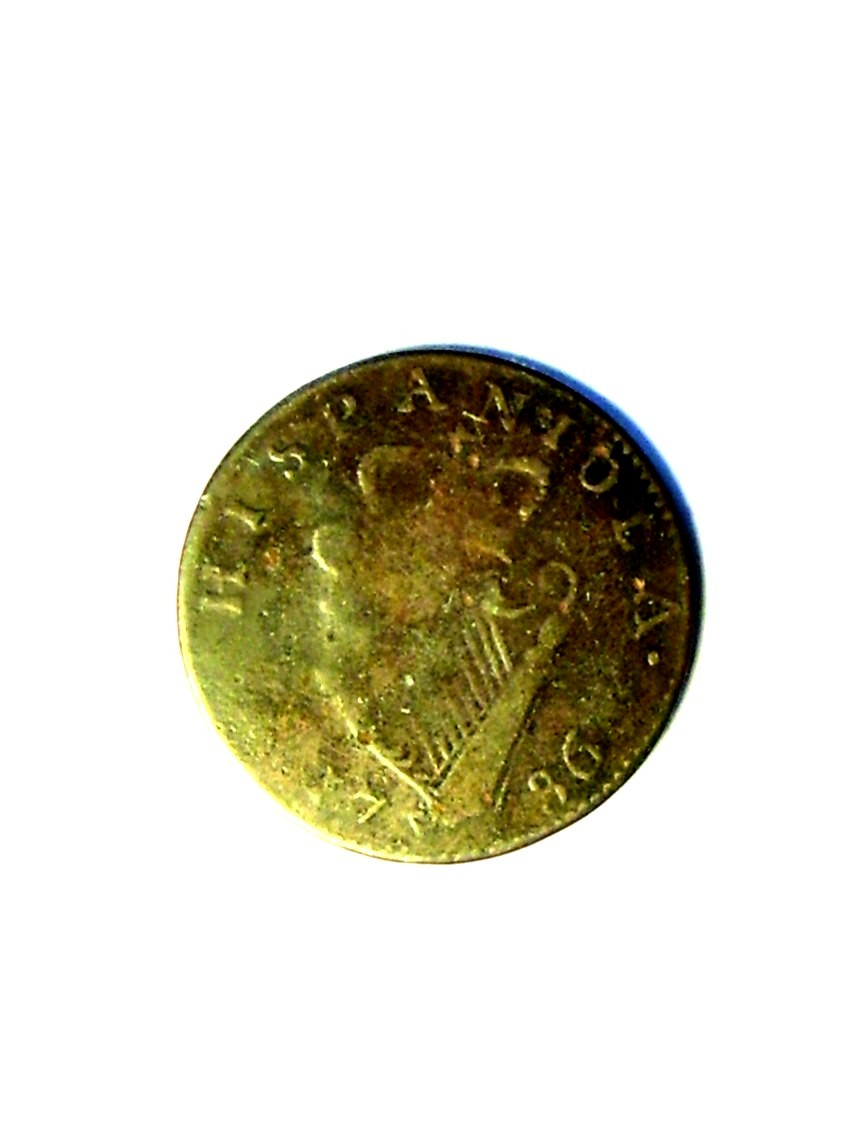HISPANIOLA copper - JOHN CHALMERS?
What is it about the rare 'HISPANIOLA 1736' coppers which marks them as British Evasion coins, as they are referred to in catalogs, rather than the product of John Chalmers? The head on one of the two types copies that on the 1769 Irish halfpennies; and the date is spurious - they were struck in the 1780s.

'I'C' below the bust could apply to a British coiner with the same initials or to him. BUT .....
With 'Auctori Plebis' ('By the authority of the people') in the legend, it reads more like it came from a republic rather than a monarchical society, such as Britain.
Most Evasion coins with a royal bust acknowledge the monarch. This has the bust, but the legend on this token doesn't.
John Chalmers of Annapolis, Maryland, was working in the 1780s, and the similar inscription on Connecticut cents of this period suggest an American connection, not a British.
Is there a better reason for attributing them to Britain?
Comments
"Evasion" coins are a fascinating topic. It is a general term for coppers with bogus legends that avoid counterfeiting laws. With adequate research some issuers may be identified - yours seems a good candidate. I'm sure there are others that subtly or overtly undermine the monarchy and politics. Certainly some were made in America and Ireland, but like true counterfeits most will never be completely identified by maker and location. But by default, lacking other information, they are simply grouped as "British".
Pacific Northwest Numismatic Association
Thanks for your helpful comments!
The one cogent argument against this being a British 'Evasion' copper is surely that, under the threat of death for forgery, it would be foolish to lead the authorities to you, by placing your initials boldly on the 'coin'.
If the lettering on this coin matches the Lettering punches used by Chalmers during the 1780s, then you would have some interesting evidence. Have you tried comparing them?